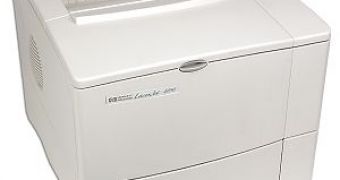According to a study that measured the amount of particles released by laser printers into offices and homes, nearly all of the units deemed unhealthy were made and sold by HP. The study, which was published in the American Chemical Society's Environmental Science & Technology journal, presents the results of testing 58 office laser printers. The printers include models made by the biggest names in the industry: Canon, HP and Toshiba. The tested printers were rated in several categories, according to their particle emissions.
There were found 13 laser printers that entered the group of "high particle emitters" and 12 of them were made by HP according to the news site ComputerWorld. Among the hazardous HP printers there are the following models: Color LaserJet 4650dn; Color LaserJet 5550dtn; Color LaserJet 8550n; LaserJet 1320n; LaserJet 2420n; LaserJet 4200dtn; LaserJet 4250n; LaserJet 5; LaserJet 8000dn; and the LaserJet 8150n. The high number of defective HP printers can be explained by the fact that most of the tested printers were made by HP. "Of the 58 printers researched, 48 -- or 83% of the total -- were from were HP".
The good news is that out of 58 tested printers, 37 were in the safe category, and from those 37 safe printers, 29 were produced by HP. At the "low emitter" category entered six printers and five of them were HPs. According to ComputerWorld, a HP spokeswoman said that the company is studying the problem and will soon release a detailed response. "HP is currently reviewing the Queensland University of Technology research on particle-emission characteristics of office printers". The HP spokeswoman also said that the manufacturing company HP is constantly monitoring the "dust release and possible material emissions" from all office and home intended products, in order to comply with existing regulations.
"While a more comprehensive study is still required to provide a better database of printer emission rates", the researchers wrote in the paper, "the results imply that submicrometer particle concentration levels in an office can be reduced by a proper choice of the printers."

 14 DAY TRIAL //
14 DAY TRIAL //